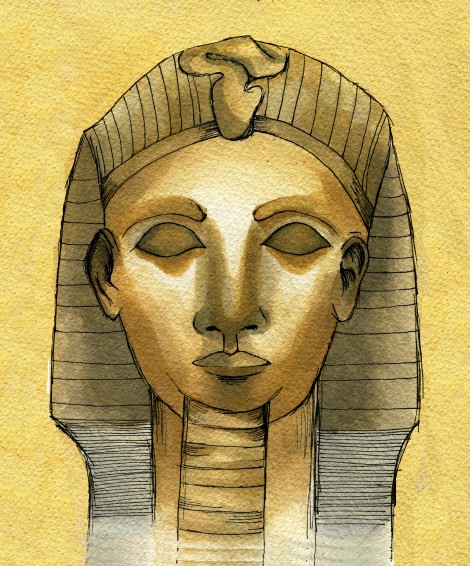University of Toronto professor Mary-Ann Pouls Wegner of the Near and Middle Eastern Civilizations department and her team conducted a dig in Abydos, Egypt last summer that unearthed majestic treasures consisting of an offering chapel, a monumental building with animal remains, and a statue believed to be of the “female king” Hatshepsut.
Hatshepsut was an Egyptian ruler in the 18th dynasty (about 3,500 years ago) that assumed the otherwise male title of “pharaoh.” She co-ruled with her stepson Thutmose III because he was too young to take the throne at the time that his father, Thutmose II, died. In art and other artifacts, Hatshepsut is portrayed as a male with the traditional false beard — a symbol of power — although delicate features like her small waist and chin are distinguishably female. Hatshepsut’s co-regent and eventual successor, Thutmose III, did his best to wipe out the female ruler from history after her death, possibly because she kept him from power for more than 20 years. Her 22-year reign places her as the longest ruling woman of Egypt in her time.
The wooden statue is a magnificent and rare find both because of the attempted eradication of Hatshepsut’s image during Thutmose III’s reign and the rarity of existing royal wooden statues. Osiris, god of the afterlife, was held in high esteem and worshipped by the ancient Egyptians in Abydos. Interestingly, the offering chapel discovered by the team was built near the processional route of the festival of Osiris. The wooden statue is also thought to have been part of a ceremonial procession and festival celebrating Osiris. Monuments were created along the processional route to show their life-long dedication and participation to this god. However, if one built too close to the route, he could face the death penalty.
The team also recovered a repository of 80 animal mummies. The remains were mostly of dogs but included cats, sheep, and goats. It is suggested that these animals were part of a sacrifice — the number of dogs discovered at the site implies that they were probably sacrificed to the jackal god Wepwawet, leader of the Osiris festival and the one who guided the deceased to the underworld. The team believes that these sacrificed animals belong to an undiscovered tomb and that the remains were displaced during tomb robberies.
The discovery of these artifacts in Abydos contributes to the understanding of Ancient Egyptian ritual activity and sheds light on the mysterious past of a once-powerful female leader.


